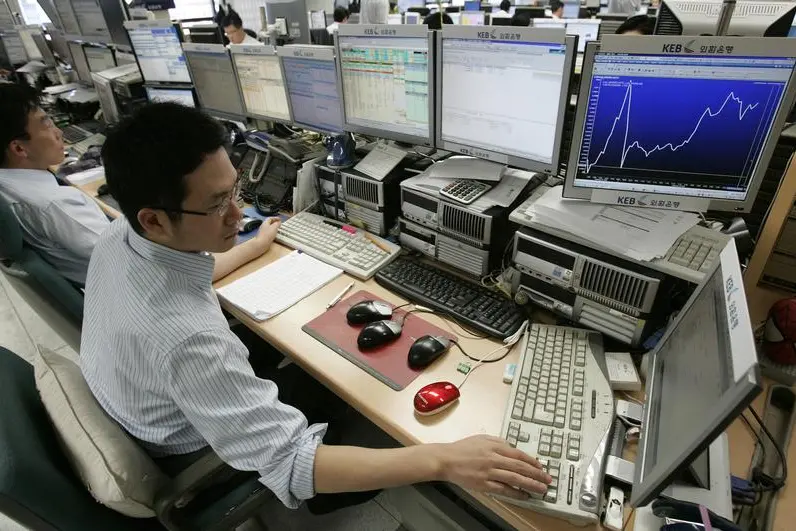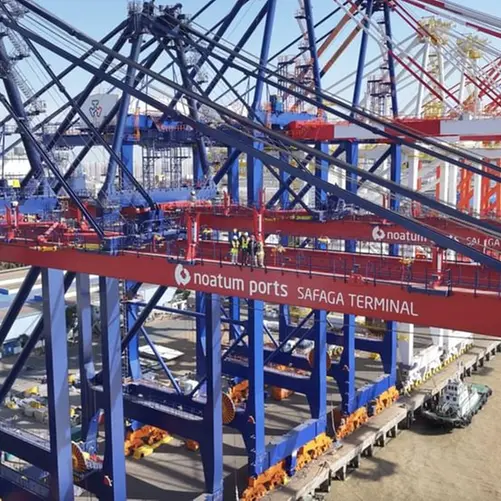PHOTO
A foreign currency dealer monitors a screen displaying exchange rates between the dollar and the Korean won at Korea Exchange Bank in Seoul September 2, 2008. South Korea scrambled to avert a financial crisis on Tuesday by warning investors against betting on a won slide, but shrank from intervening in currency markets to stem the biggest capital flight in a decade.
As we enter the third quarter of 2015, one of the themes which I am currently seeing throughout the currency markets is that recent history is repeating itself. By this I mean that if you take a look back at what was occurring as we commenced 2015 there was improved demand for the USD and an aggressive decline throughout the commodity markets. The same two trends are appearing once again as we enter the second half of the year, and while the momentum for the USD is nowhere near as strong as it was at the beginning of 2015 when the USD went on to reach milestone highs against a basket of its currency trading partners, the dollar is supported and currently finding buyers while optimism remains strong that the Federal Reserve are set to begin raising interest rates. Since autumn 2014 I have expected this to begin around September 2015.
However, the raising of US interest rates has been discussed everywhere for months and instead I think it is worth examining the woes in the commodity markets returning. The third quarter of the year has seen the resumption of selling in the commodity markets, with this including aggressive losses in WTI and the price of Gold tumbling to an unexpected five-year low, during one of the quietest trading sessions on a Monday morning in Asia.
The losses for Gold might be seen by some as inevitable, since most expected the yellow metal to continue dropping and the outlook of many spectators being strictly bearish (further losses). What no one expected however was the move below the critical $1100 support level to happen on a Monday morning in Asia, and during the end of the weekend in other times zones.
On the other hand the losses for WTI have been far more understandable. Although it is difficult to ascertain why the price of WTI jumped to an unexpected $62 at the beginning of June, I suspect that the mindset of investors was that after the price of WTI fell from $115 to $42 the commodity was heavily oversold and would need to rebound somewhere. However, the truth was that the economic conditions remained aggressively against gains for WTI. This meant that the commodity was always vulnerable to suddenly reversing its gains, and this has subsequently happened with the price of WTI having dropped by $15 since the first day of July. I have continually repeated in my market reports that there is an overwhelming supply and demand equation in the oil markets, in which the oversupply is constantly pressuring the price of oil.
The oversupply in the markets remains a constant threat to investor sentiment when it comes to WTI, and it is possible that the oversupply in the markets right now is even greater than when concerns about an oversupply emerged around this time last year. The recent gains in the US oil rigs and consistent inventory reports from the United States suggest that production levels in the US are still around record levels, and even if the dramatically lower prices are hurting producers, stockpiles from the United States are not going to decline quite yet. On top of this, we are reading about investment in oil production increasing in both Saudi Arabia and the United Arab Emirates, which suggests to me that OPEC are comfortable with the lower prices and are willing to let them continue around these levels in an attempt to regain market share.
Another factor that has inspired further selling momentum in the price of WTI is the news of a nuclear agreement in Iran being reached, which will result in the easing of Iranian economic sanctions and the increased likelihood of further oil being pumped into the markets. It is widely suggested that the potential output from Iran could be a further two million barrels a day, however after being under the current sanctions for quite some time it is unlikely that the country will be able to begin pumping out its potential output until at least 2017 in my opinion. What I am keeping an eye on right now is the possibility of there being less demand for oil than previously anticipated as this may inspire further declines in the WTI markets. This would not only strengthen the already over-powering oversupply and demand equation, but it would also further weaken investor sentiment towards oil.
From an investor point of view, declines in the commodity markets spell out one of the easiest trades for investors because it also inspires declines in those currencies with economies linked to crude exports. Weakness in commodity linked currencies has become a global phenomenon in itself with 2015 seeing continuous pressure and declines in multiple currencies. When I mention 'global phenomenon' it really cannot be understated because the abovementioned trend has hit Brazil, Chile, Columbia, Canada, Indonesia, Malaysia and many others. We have even seen currencies such as the Australian Dollar and New Zealand Dollar hit milestone lows against the USD, with the continuous pressure on the commodity markets being one of the major moves behind this.
While the outlook for WTI is still exposed to further losses, the stunning move below $1100 for Gold has meant that the yellow metal has entered a new period of weakness. There has been clear hesitation to purchase Gold from investors for some time, and the metal has found itself under continuous pressure due to the interest rate outlook from the United States and as a result of the improving US economy.
It was expected that the US interest rate outlook would limit Gold gains, but it has come as a complete surprise that there has been such a shortage of buyers, despite risks to the markets that usually inspire increased Gold demand. This shortage of investor interest towards purchasing Gold was really emphasized when the metal failed to rise despite uncertainty over the Greece situation intensifying to new levels. Such situations usually promote a significant improved interest in Gold demand, but the failure of Gold to rise even with the Greece uncertainty has led to some suggesting that Gold has lost its appeal as a safe-haven.
Whether Gold has completely lost its appeal as a safe-haven is questionable, however it is certainly coming under increasing pressure over the US economic outlook and interest rate anticipations. The data from the United States is consistent and the economic recovery looks sustainable. Job creation has installed itself as the star performer of the US economy and as long as these job reports continue to impress, optimism over the US economy will continue to grow. This ultimately means that Gold will be exposed to further losses and with the metal now finding itself below $1100 for the first time in five-years, the door has been opened to an eventual move below $1000.
Disclaimer: The content in this article comprises personal opinions and ideas and should not be construed as containing personal and/or other investment advice and/or an offer of and/or solicitation for any transactions in financial instruments and/or a guarantee and/or prediction of future performance. FXTM, its affiliates, agents, directors, officers or employees do not guarantee the accuracy, validity, timeliness or completeness of any information or data made available and assume no liability as to any loss arising from any investment based on the same.
Risk Warning: There is a high level of risk involved with trading leveraged products such as forex and CFDs. You should not risk more than you can afford to lose, it is possible that you may lose more than your initial investment. You should not trade unless you fully understand the true extent of your exposure to the risk of loss. When trading, you must always take into consideration your level of experience. If the risks involved seem unclear to you, please seek independent financial advice.
About Jameel Ahmad
Jameel Ahmad is the Chief Market Analyst at ForexTime (FXTM) Limited. Prior to joining FXTM, he worked as a strategic research analyst for an international brokerage firm, where he gained invaluable experience in writing FX commentaries and fundamental analysis for distinguished financial websites. Having worked on a variety of projects in the UK, US, Middle East and across Europe within the fields of banking, international finance and asset management, Jameel has a strong background not only in forex analysis, but also in risk management and project management.
Jameel holds a BA (Hons) degree in Business Studies with Accountancy & Finance from the University of the West of England, Bristol, UK.
© Capital Business 2015





















